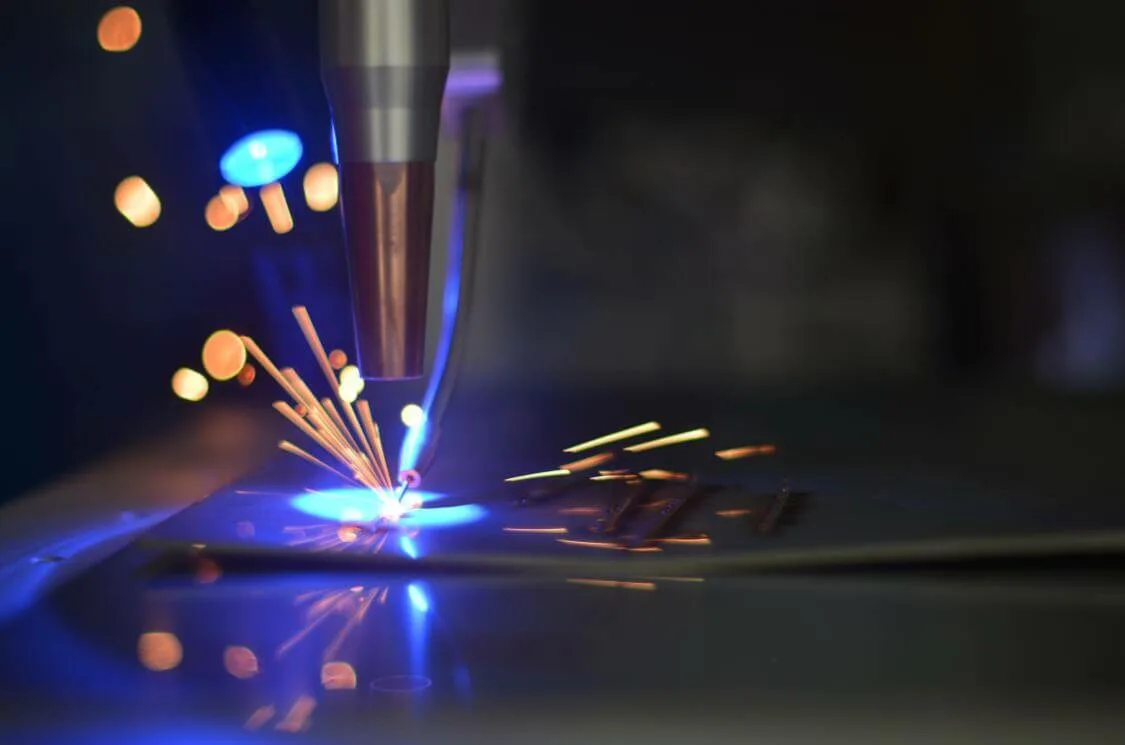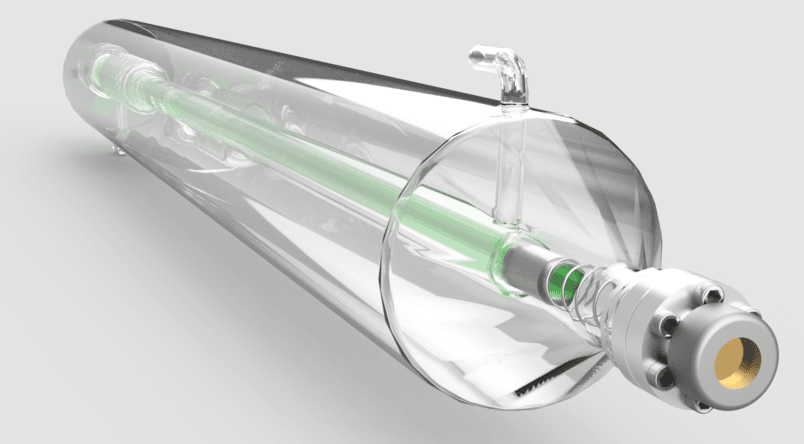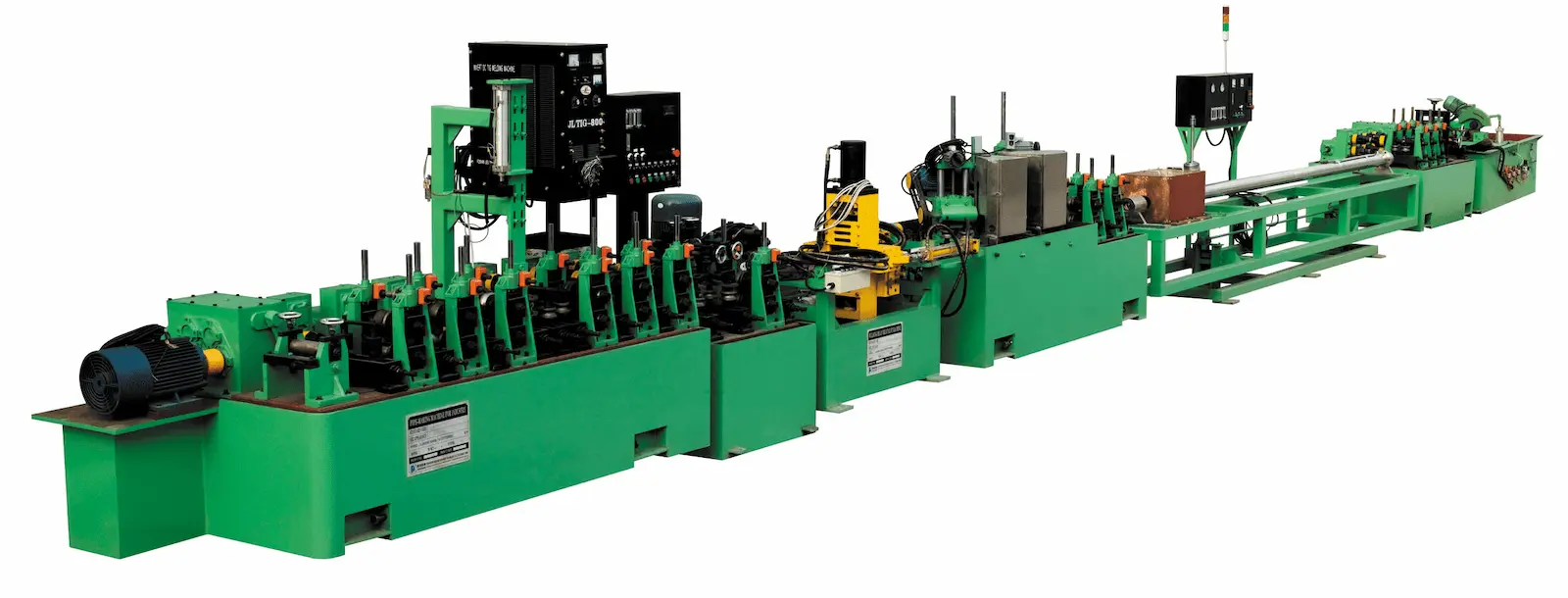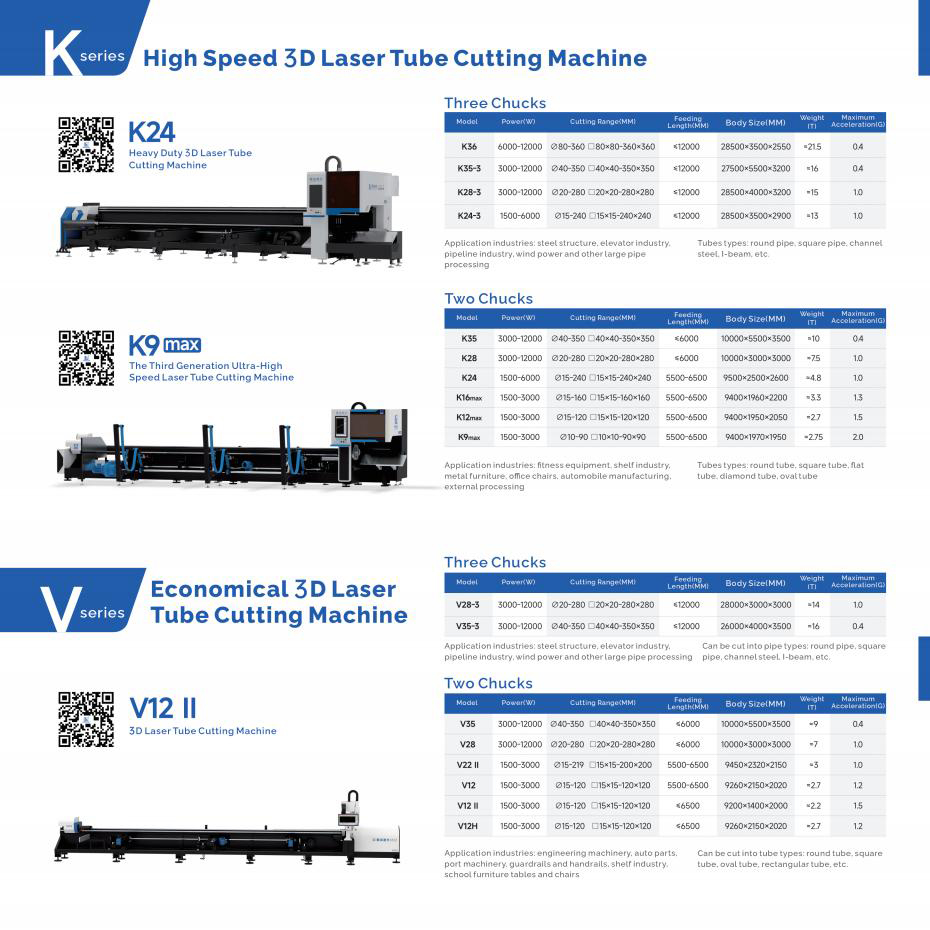Metal Materials
1.Stainless Steel
Fiber laser cutting excels in processing stainless steel, achieving remarkable cutting depths of up to 0.75 inches with 95% efficiency. The precision of fiber laser technology makes it the preferred choice for automotive components and medical equipment manufacturing.
2.Carbon Steel
When cutting carbon steel with fiber lasers, the process varies based on material thickness. Thin sheets benefit from nitrogen-assisted laser cutting, ensuring oxidation-free edges, while thick sheets utilize oxygen-assisted cutting for optimal results. This versatility in cutting methods makes fiber laser technology particularly valuable in construction projects and heavy machinery manufacturing, where precision and edge quality are crucial.
3.Mild Steel
Modern fiber laser systems can efficiently cut mild steel up to 0.6 inches thick while maintaining exceptional edge quality. The cutting process produces minimal heat-affected zones, resulting in superior finished products. This capability has made laser cutting the go-to choice for fabricators working with mild steel in structural applications and general manufacturing.
4.Aluminum & Alloys
Cutting aluminum and its alloys requires specialized fiber laser technology incorporating reflection absorption systems. The process typically employs nitrogen or compressed air as assist gases to achieve optimal results. This advanced cutting technique has revolutionized aerospace manufacturing, enabling precise fabrication of lightweight components with complex geometries.
5.Copper
The high reflectivity of copper presents unique challenges in laser cutting operations. Advanced fiber laser systems overcome this through precise power control and specialized assist gases like nitrogen or oxygen. The resulting precision makes this method invaluable in electrical component manufacturing, particularly for complex circuit elements and power distribution systems.
6.Brass
Processing brass requires high-power fiber lasers working in conjunction with nitrogen assist gas, enabling stable and precise cutting operations. This combination proves particularly effective for creating intricate decorative items and detailed architectural elements. The laser cutting process preserves the material’s distinctive finish while achieving clean, precise edges.
7.Titanium
Fiber laser technology enables precise cutting of titanium alloys up to 10mm thick without producing burrs, maintaining the material’s structural integrity throughout the process. This capability is crucial in aerospace and medical device manufacturing, where material purity and exact specifications are paramount.
8.Nickel Alloys
The precision cutting capabilities of fiber lasers make them ideal for processing highly corrosion-resistant nickel alloys. This advanced cutting method delivers exceptional accuracy in the energy sector and aerospace industries, where complex components require precise machining while maintaining material properties.
9.Galvanized Steel
Laser cutting of galvanized steel achieves depths of up to 0.5 inches with 88% efficiency. The process preserves the protective zinc coating while ensuring precise cuts, making it essential for automotive components and construction elements where corrosion resistance is crucial.
Non-Metal Materials
10.POM (Polyoxymethylene)
Fiber laser cutting of POM delivers exceptional precision for gear manufacturing and medical device components. The process produces remarkably smooth edges, crucial for mechanical applications where precision and surface finish are essential. The controlled laser cutting environment prevents material degradation while ensuring dimensional accuracy.
11.Acrylic (PMMA)
Low-power laser cutting of acrylic results in optically clear, polished edges that require no additional finishing. This capability makes fiber lasers particularly valuable in display manufacturing and architectural applications where aesthetic quality is paramount.
12.Paper & Cardboard
The precision of laser cutting enables intricate pattern creation in paper and cardboard materials at high speeds. This technology has transformed packaging design and handicraft production, allowing for complex cuts that would be impossible with traditional methods.
13.Leather
Advanced fiber laser systems achieve precise leather cutting without burning or scorching the material. This technology has revolutionized footwear and furniture manufacturing, enabling complex patterns while maintaining material integrity and reducing waste.
14.Cloth
Laser cutting technology expertly handles various textile materials while preventing common issues like melting or fraying. The precision of the cutting process ensures clean edges and accurate patterns, essential for high-end fashion manufacturing.
15.Rubber (Chlorine-Free)
Fiber laser cutting of chlorine-free rubber materials ensures precise results while maintaining safety standards. The process requires careful material selection to avoid harmful emissions, making it suitable for specialized industrial applications.
16.Cork
Laser cutting technology provides precise processing of cork materials, ideal for decorative applications and acoustic panel manufacturing. The cutting process maintains material integrity while achieving clean edges essential for both functional and aesthetic purposes.
17.Wood
The fiber laser cutting of wood requires precise control of power settings based on the material’s oil content. This technology excels in processing plywood and MDF, creating clean cuts while minimizing charring and burning effects.
18.Glass
High-speed laser cutting of glass demands specialized techniques to manage reflection issues. The process ensures stable cutting while maintaining material integrity, crucial for precision applications in electronics and architectural elements.
Other Materials
19.Magnet Sheet
Fiber laser technology enables precise cutting of magnetic sheets for electronics and industrial labeling applications. The process maintains magnetic properties while achieving clean edges, essential for specialized electronic components.
20.Foam Materials (e.g., EVA, Polyurethane)
The precision of laser cutting technology allows for accurate processing of foam materials like EVA and polyurethane. This capability is crucial for creating custom packaging solutions and soundproofing elements, where controlled thickness and clean edges are essential.
Advantages of Fiber Laser Cutting
That’s why fiber laser cutting has emerged as the go-to solution across industries for applications that require speed, accuracy, and reliability. It particularly shines in its ability to cut varied materials, from metals such as steel and aluminum to plastics and composites. This versatility makes it a go-to option for businesses requiring consistent results in various applications, including manufacturing, automotive, and aerospace.
One of the biggest advantages to fiber laser cutting is its ability to work on thicker materials. Fiber lasers excel in cutting metals over 0.25 inches thick, providing extremely clean and precise edges. CO2 lasers dominate in high speed, high quality cutting of metals over 0.375 inches thick. Fiber lasers are a reliable option across all industries, especially when it comes to cutting in straight lines.
Their high beam quality typically has an M2 factor near 1. This accuracy is why they are an excellent choice for jobs requiring detailed operations, such as laser drilling or welding.
Another key benefit of fiber lasers is their durability. They typically run for 50,000 to 100,000 hours before requiring significant maintenance. This lifetime is far greater than that of CO2 lasers, which usually last just 20,000 to 30,000 hours. This durability translates to reduced downtime and operational costs over time.
For companies eager to boost productivity, this represents a massive advantage. Fiber lasers achieve incredible precision with ultrashort pulses, as small as 350 femtoseconds. This feature set allows for high-precision applications, like micromachining or the production of complex patterns.
The output power of such lasers is limited by physical effects, such as Brillouin scattering, and their tightly integrated form. Their efficiency when it comes to thinner metals is astounding. They are excellent at other applications, such as laser welding and cutting in continuous wave modes, rendering them extremely useful.
Applications of Fiber Lasers
As a result, fiber lasers have quickly proven to be an essential tool in almost every industry that requires extreme precision, versatility, and efficiency. Such properties endow them for diverse applications from material processing to smart manufacturing.
Let’s take an in-depth look at some of the most important applications where fiber lasers are best-in-class.
That’s where fiber lasers truly shine, especially on engraving and cutting applications. Unlike CO2 lasers, which are limited to certain materials, fiber lasers can engrave over thirty different materials, including metals like aluminum, brass, and copper.
This unique capability is priceless for industries. They require highly durable and precise identification marks, such as serial numbers or company logos, to be made on metal tools and components.
They’re capable of processing non-metal materials such as glass and plastics, further increasing their versatility. A typical fiber laser is more than capable of engraving a company logo onto a stainless-steel tumbler.
It’s capable of engraving fine patterns on sensitive glassware too. Fiber lasers are able to effortlessly cut through materials up to 25 mm thick. Their results are outstanding accuracy, even on low carbon steel plates.
In the manufacturing industry, fiber lasers are most commonly used in the electronics industry, especially for drilling printed circuit boards (PCBs). Their micro-level precision means no burrs and perfectly placed holes—critical to keeping up with the compact designs of today’s electronics.
Fiber lasers represent a major improvement in fusion welding. They easily fuse together and bond two different metals, forming an incredibly strong connection without the use of additional bonding materials.
A second point of brilliance is their speed and cost-efficiency. Fiber lasers can cut thinner metals much quicker, at speeds up to five times faster than CO2 lasers.
They run at roughly 50% less cost, making them an incredibly efficient solution. These systems have life spans between 50,000 to 100,000 hours before major maintenance is needed.
This long lifespan guarantees a dependable performance that cuts down on downtime and the frequency of replacements over the years.
Factors to Consider Before Using Fiber Lasers
When used properly, fiber lasers can truly be a powerful punch. Their precision, efficiency, and versatility has led to their widespread use across industries including manufacturing, construction, and packaging. Selecting the best system requires some serious consideration.
You’ll want to ensure the solution you choose is tailored for your exact needs and won’t incur costly expenses on excess power or capabilities. By tackling these factors, you can better position yourself to make educated decisions and set yourself up for success with optimal performance.
When you’re determining fiber laser power, think about the material you are cutting. The thickness of that material greatly affects your decision. If cutting thin sheets below 0.100 inches, a system with 10kW or less is adequate.
If you frequently process materials over 0.100 inches thick, then a 15kW system is a more realistic option. For materials over 0.130 inches thick, choose a 20kW system to ensure efficient performance. Cutting 9 gauge stainless steel, roughly 0.157” thick, with a 1kW laser would be difficult.
That approach is not sustainable since it’s low speed and has no flexibility to the process. Higher power systems cut faster and increase the types of materials you can process accurately.
If you’re primarily using them for engraving or marking applications, lower wattage systems are usually more than sufficient. Systems closer to 50W achieve efficient, effective results for the marking of metals.
Conversely, these in the 10W-20W range perform better on non-metallic materials including plastics and composites. This renders them well-suited for packaging or product labeling applications.
For businesses that depend on ultrafast production lines, traveling at speeds of 650 to 1,970 feet per minute, the choice is urgent. It’s important to select a system that is right for your output requirements.
Finally, take a hard look at your workload before deciding to invest in higher power systems. If your projects are not required to run 24/7, a lower wattage model may make more sense.
When dealing with thicker material, this crucial decision will ensure you are saving dollars without sacrificing quality. With fiber laser system options from 10W to 10,000W, there’s tremendous versatility to handle everything from fine engraving application to tough cutting jobs.
Conclusion
Fiber lasers provide unmatched levels of precision, speed and versatility. Their ability to cut through an extensive array of materials, perform intricate jobs and provide uniformity proves valuable in many applications. These lasers are particularly well suited to industries including automotive, aerospace and electronics, where high efficiency and precision is often required for intricate workpieces.
When selecting a fiber laser, you should consider the types of materials, thickness and power needs. Customizing the laser to the job at hand makes all the difference in getting the best results and value. When properly configured, fiber lasers cut faster, use less material and improve overall productivity.
If you need a dependable and versatile cutting solution, fiber lasers should be on your radar. They marry cutting edge technology with real-world benefits. This efficiency combined with their speed makes them a great option for companies looking to increase their production and overall efficiency. See all your options today and experience the difference for yourself.



